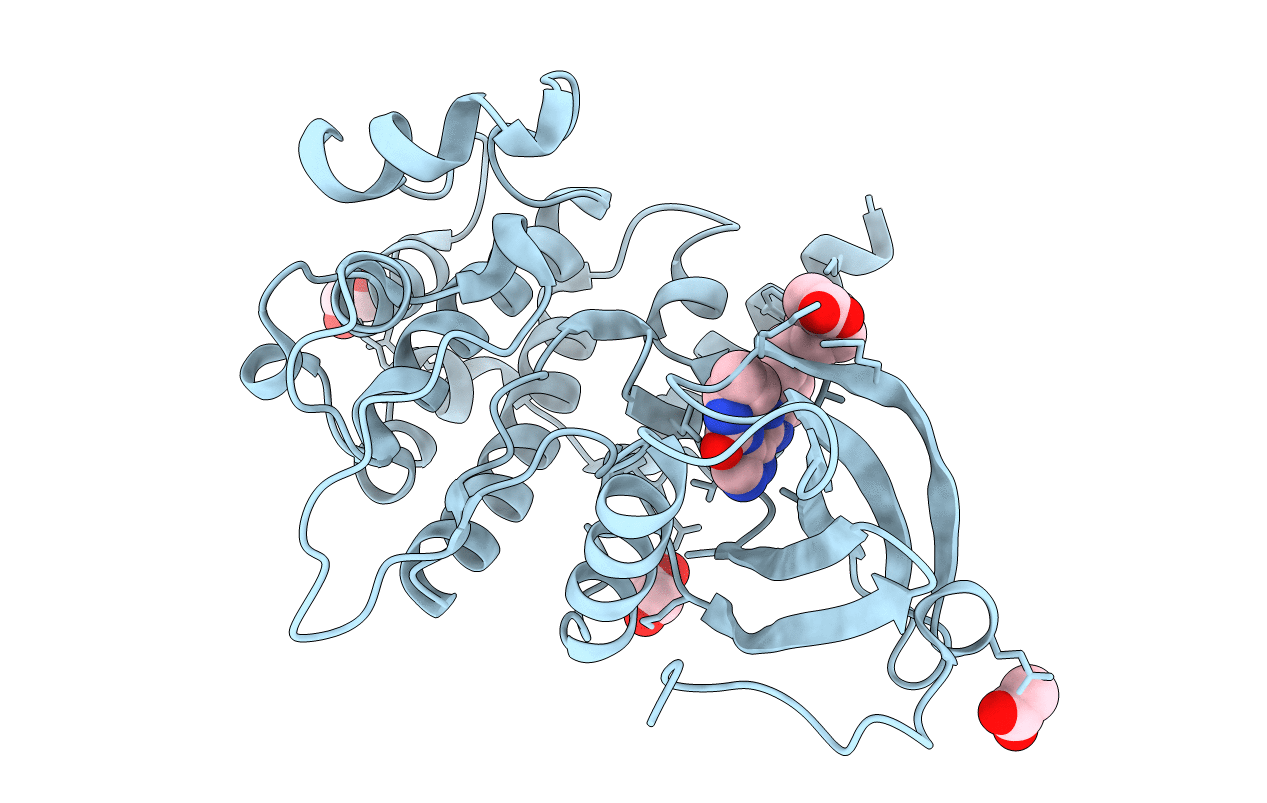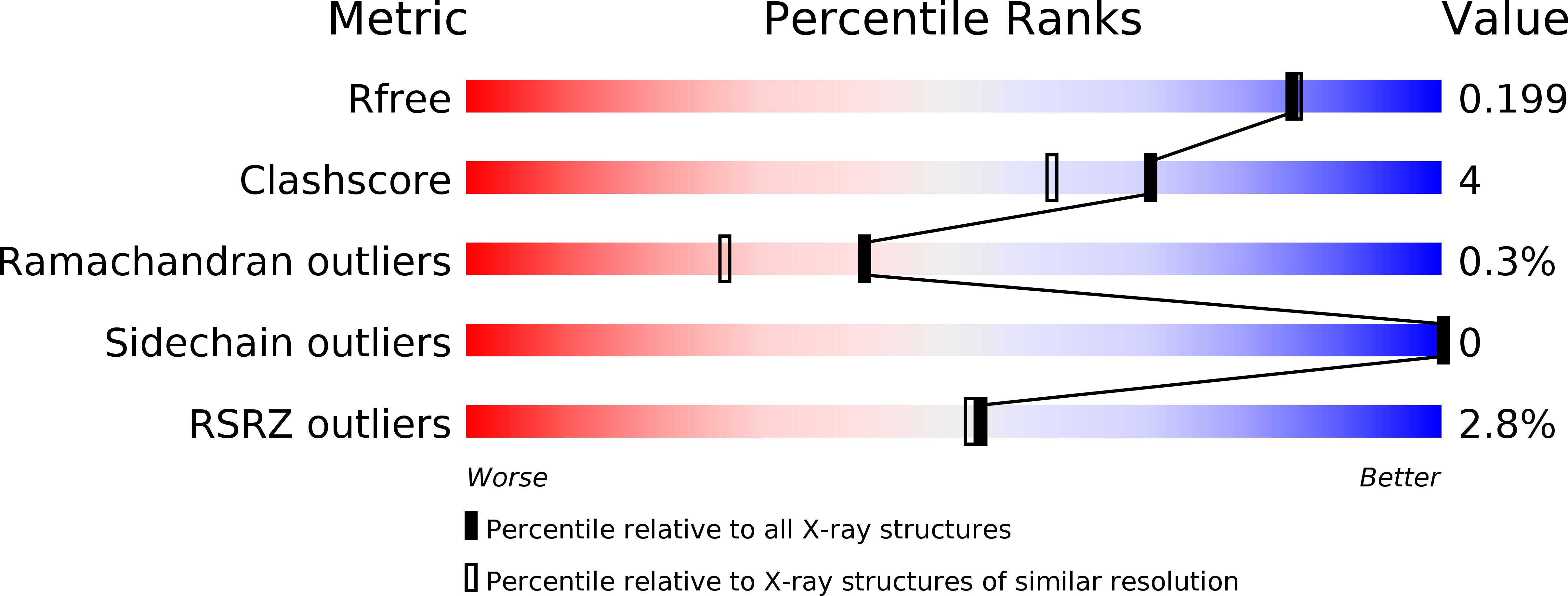
Deposition Date
2014-06-16
Release Date
2015-07-01
Last Version Date
2024-11-20
Entry Detail
PDB ID:
4QMM
Keywords:
Title:
MST3 IN COMPLEX WITH AT-9283, 4-[(2-{4-[(CYCLOPROPYLCARBAMOYL)AMINO]-1H-PYRAZOL-3-YL}-1H-BENZIMIDAZOL-6-YL)METHYL]MORPHOLIN-4-IUM
Biological Source:
Source Organism:
Homo sapiens (Taxon ID: 9606)
Host Organism:
Method Details:
Experimental Method:
Resolution:
1.85 Å
R-Value Free:
0.19
R-Value Work:
0.14
Space Group:
C 1 2 1


